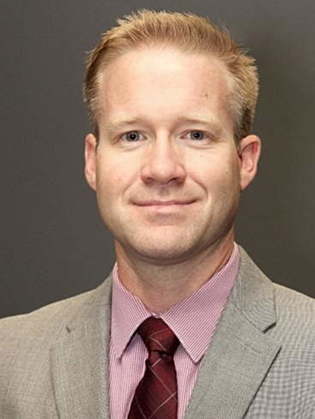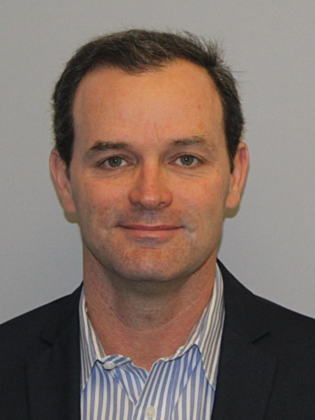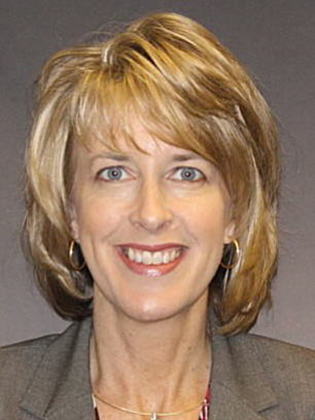Sales Enablement PRO Awards 2022: How Cisco Optimizes Sales Content for Scale
1.6K View | 22 Min Read
Congratulations to Sales Enablement PRO Award winner the Enterprise Networks & Cloud Seller Content Team from Cisco. Learn more about the Sales Proficiency award winning initiative below.
Sydney Lee: I’m excited to announce the winner of the 2022 Sales Enablement PRO Member Award for Business Impact on Sales Proficiency. Congratulations to Jonathan Hayon and the Enterprise Networks and Cloud Seller Content team at Cisco. I’m excited to be here with Jonathan today as he shares how the team at Cisco has relentlessly optimized content for several sales and GTM teams with tried-and-true content and process automation programs. Jonathan, I’d love for you to introduce yourself, your role and your organization.
Jonathan Hayon: Thank you, Sydney. First of all, thanks so much for the trophy and the award. We’re super, super, super excited and the team is psyched up about this. Thanks so much. So, I’m Jonathan Hayon. I lead the Enterprise Networks and Cloud Seller Content team at Cisco. Our team’s charter is to grow the enterprise networks and cloud sales by arming our internal and partner sellers with the content that they need to win.
SL: Absolutely. That’s fantastic. And again, thank you so much for being here with me today. And so, I’d love to get started on the topic of the impact of your team’s efforts at your organization. So, to start off, the Enterprise Network and Cloud Center Content team enables several teams at Cisco. How do you structure and appropriately scale your team to set up your sales reps for maximum proficiency?
JH: Yes, so our team represents two major portfolios in Cisco’s offering. One is the Enterprise Networks Solutions, which include the products that really built Cisco into what it is right now, the core networking products. That includes our software defined networking platforms and the hardware that runs, that those software defined platforms run on. On the other side, we have the cloud portfolio, which includes what customers usually refer to as the data center. That’s our compute solutions and our cloud networking solutions. Together just to give a sense, these two portfolios represent about half of Cisco’s annual bookings, which is a lot of money. My team is really structured around those two portfolios. On one side, the EN team with members Andrew Jeffries, Marianne Siemietkowski Needham and Kirstyn Allen. They focus on the enterprise network’s solutions and address both sellers, internal seller and partner sellers. And the other team is led by Ed Wang and includes David Brighton, Kyle Monin, and they support our cloud networking and our cloud compute solutions. Now, since we never just want to talk about a product or a capability, but rather on customer outcomes like what is the challenge that we’re helping solve our customers? And we want to make sure that we help our sellers shape that story in the right way so they can position the solution in the right way. Most of our solutions align to one of those portfolios, but we typically have interconnects between those two portfolios and other offerings in Cisco’s solutions like security, service provider, collaboration. And so, to do that at scale, we have to, you know, we found that we have to collaborate very well with other teams, whether it’s product marketing teams across different portfolios, whether it’s a sales and partner teams, of course, customer experience, engineering. We have a partner marketing group, so getting all of those people together is what helps us scale. And I really wanted to do a little plug for the team, the team that I have is an awesome team, an amazing team. Each one of the members bring a different set of skills and capabilities, and we have folks that came from sales. I came from sales. I was doing sales for Cisco for 10 years and account manager and team lead roles. And we have folks like that in the team, folks that came from the partner organization or working for partners, people that came from product marketing or program management, as well as worldwide sales training. So, we have a very big variety of experiences in the team. And I think that together with all the work and the collaboration that the team put in into our day to day, that’s how we’re achieving what we’re achieving. And that’s really what I’m celebrating with this award. It’s them. It’s the team.
SL: Absolutely, that’s fantastic. And I’d also love to know what initiative did your team lead that was most impactful to achieving sales proficiency at Cisco this past year and what specific processes have changed within the sales team to implement this initiative?
JH: All right. So I’d like to touch maybe on three items that we’ve changed and developed over the years and perfected in the latter. One of them is seller content, another is the launch and our NPI process, and the last one is sales acceleration. So, I’ll talk a bit about content and specifically, I’ll talk about two pieces of content that we developed in the team. We call them the seller launch guide. But really, the challenge that we have is that Cisco is a challenge of abundance. We have so many product portfolios, so many customer personas that we need to address. And with a portfolio like Cisco, you’re really touching many facets of our customers IT organization and not only IT. And so, with all of that, it’s really hard to help the sellers focus on the right message. Our AMs are interconnected to the customer and they need to position all of Cisco’s portfolio. So, it’s really hard for them to keep on top of everything. And so what we’ve done is we tried to simplify, we developed templates, pieces of content that we have been using consistently, that are built for the ears of an account manager, very focused, very short form that include key pieces of information about the product, what the product does? What use cases can address for the customer? How the product is differentiated? What are the other resources that we can offer sellers to dig in deeper? And we package that into a one page. Like I mentioned, we call that the seller launch guide. And we recently also developed a video version of that, because not all of our sellers have the patience to read, so we’re trying to deliver the content to them in different ways. So there finding the right way to taking the information. The second piece is what we’ve done with our launch and NPI process, NPI in our terminology is New Product Introductions. I would maybe simplify it by saying launches are the big announcements. NPIs are probably the smaller scale announcements. The challenge that we had was we have so many products and so many… Our innovation engine is going so fast with a lot of output. And the challenge that that creates for our sellers is there’s so much that we have been giving them. And there came a point where they said, hey, guys, hold on. We can’t absorb it all. There are so many new innovations coming out, but we can’t really take it all in. So, we need your help to make it simpler. And so, we changed from a process where we announced whenever a new product was ready to we’re announcing once every quarter and we’ve collected the key announcements for that quarter into one packaged announcement. And that’s what we’ve done. That helped our sellers really be able to focus on what is the news. We’re timing the announcements so that they’re not hitting them when they can’t hear news like in the end of a quarter or end of a fiscal month. We try to focus it on the beginning of the quarter and just arm them with key information that they need to take the first steps and providing them with additional content for what they want to dig in a little bit later. That is a second item that we’ve tried to improve on. And the last one is… I mentioned sales acceleration. And when I look at sales acceleration, the element that we’ve been focusing on is what we call sales campaigns, which is a way to drive specific sales priorities into the field in a very targeted way so we can save, we can accelerate the process for sales. We can save time for them to identify opportunities, find the right information that they need to position to their customer and just get them to the most focused opportunities that they can drive the highest success with. So we developed this process with sales, where together with sales we identify the priority for that quarter or that half, sales ops, then come help with targeting the accounts, finding, digging through the data and analyzing which accounts we need to target based on the filters that we provide to them. And then my team goes in and creates a set of collateral for our sellers that help them execute that motion fairly quickly. We usually help explain to the sellers why this is important to them, because, like I said, they need to sell all of Cisco’s portfolio. Why should they focus on this specific technology and not something else right now? We help them understand why this is important for their customer, and then we give them a very simple motion one, two, three, what you need to do. This is how you find your opportunities and qualify them. This is the story that you need to tell them. And here are some tips for you to bring the deal home. This template that we’ve developed has proven very successful for us. And now we can, we’re running this program for a while and now we’re actually seeing something that is pretty unique in the world of marketing or at least the world of marketing that I live in. We’re seeing a very clear direct connection between content success and business success. So, we’re able to map exactly which opportunities converted and what booking we got from a certain campaign, which is something that we don’t have in a lot of the other activities that we’re running.
SL: Absolutely. That’s fantastic. And I’m also curious to know what was the biggest challenge your team faced and how did you overcome it?
JH: Yes, so I think that the biggest challenge relating to the items that I mentioned before, I think the biggest challenge is about change. We’re trying to change from all processes that worked for everyone before. And everybody was happy and in a large organization like Cisco you get to those points where there are processes that have been here forever. And they just work. And so dealing with change, changing legacy processes, maybe lack of simple, consistent templates across different portfolios. Sometimes resistant to change. And in larger companies, there is a matter of pace. It’s harder. It takes more time to shift, move the ship to one direction or the other. So, what we’ve done is we basically leveraged our experience and our relationships. We work together to identify the pros and cons and what are the shared benefits that we can get out of changing, and then we socialize it all with our different stakeholders, with folks in our business unit, which, for them it was, we would announce let’s say products whenever they had something new and every product manager so proud of their baby. The product that they’re developing, they just want to get it out. So now when we’re telling them, hey, guys, we need to manage this in a quarterly basis, it takes some time to adapt to. But when we’re showing the added benefits of attention and the amount of engagement that we’re able to get by doing this, that’s how we got the support. I think that the other element out of, if I’m not focusing on processes, another element that we’re challenged with is… Cisco is changing, has been changing throughout the last years its focus from selling software, boxes like switches, routers, wireless access points to now position platforms and everything is software driven. And selling software with subscriptions, it’s a big change for a company like ours, but we’re making very strong and fast progress on this. So, I think that as a team, this shift to software or selling subscription, driving subscription renewal, which is really the core of driving subscription renewals is in adoption of the software and how we position it and get our customers to use the capabilities. Because if they don’t use it and are not benefiting from the capabilities that they will likely not want to renew. So, I think that the change in how we position software and subscriptions nowadays and the focus on the platforms versus hardware is a challenge that we’ve been tackling. And as a result, we’re also looking at what type of content changes we need to make. What type of process and solutions and platforms we need to use in order to address that.
SL: Absolutely. That’s fantastic. And I want to go into the second part of how enablement drives proficiency in your organization for success. And so, to start off, how do you measure the effectiveness and success of your team’s success at Cisco?
JH: Ok, so when I look at that, I focus on the impact of our content. And as I mentioned before, there are types of activities and content pieces that we can measure a direct business impact on, like those sales campaigns where we’re seeing the actual bookings that are coming from that. But the challenge that that I’m looking at in terms of metrics and measurements is how do we qualify the value of content? And it’s something that I’m sure that we’re not alone in. I’m sure that a bunch of other folks like me are grappling with that challenge right now, because most of the metrics that we typically find are around clicks and downloads and how many minutes of a video folks watched and how many got three answers or four answers and a quiz. That’s great. That tells us engagement. It doesn’t tell us anything about if the seller internalizes the content. The fact that they’ve done a quiz right after watching a video doesn’t mean that two months from now, they’ll know what they need to remember, and it doesn’t also tell us if they value the content. And so over the last year, we’ve been looking at more, more into insights, and one thing that we’ve been starting to measure is seller sentiment. We’re using ratings and reviews to get feedback from our sellers on the content, and we’re seeing high double-digit growth in the amount of feedback that we’re getting from sellers in the last year. And that’s giving us more information that we had before on content and we’re actually making changes to content based on that.
SL: And so, I’m also curious about how do you align cross-functionally to maximize sales proficiency for business impact at Cisco?
JH: Yes, so I compare that to the work of an accounting exec. It’s about building relationships. And you can only develop a relationship if you’re there with the customer in a room or where you’re spending time with your customer. So in the same token, we can only develop our relationships with sales and partners and the different teams that we’re working with if we spend our time with them. So, my team has a very close alignment with our sellers. We work together on aligning priorities, building our go-to- market motions, our execution motions together. And that that plays a key role. And I think that it’s become even more crucial today when we have more platforms that are interconnecting. Our sellers are selling across solutions, across architectures, not just one portfolio in a silo, they’re selling a solution. And so, the success in making that the way to make that successful is by building those relationships and working with sales, working with the different architectures. And we’re actually leveraging their help to create some content and verify it and review it together with us.
SL: Absolutely. That’s fantastic. And I’m also curious to know what has been the impact of the Enterprise Networks and Cloud Seller Content team on your organizational objectives.
JH: So first, I would say there is an awareness impact. We have much more alignment with sales on how content is consumed. And we’re seeing how we’re getting in front of our sellers. There is a business impact that we know. In some cases, we can quantify the impact of revenue that is driven by specific activities. And there’s a relationship impact where I see our team as the face of sales into marketing and the face of marketing into sales. So, we’re kind of acting like some sort of a liaison between the different groups. We’ve seen that we’re also being… Because we’re working with so many different groups, we’re able to break silos within the organization and leverage activities that we’re driving. I’ll give an example where we started a project with sales to drive first in priority. We executed a program and through conversation that we had with a partner team we share what we’re doing with sales and they were so excited and we went on and replicated that effort to the partner team.
SL: Absolutely. I love that your team is a bridge between that sales and marketing function at Cisco. And so, I want to go into this last topic of key considerations for enablement proficiency in 2022. So to start off, what was your team’s biggest learning in the past year and how will this impact the team in 2022?
JH: This might be common to other groups. I would talk about virtual event fatigue. We’re in front of screens all day. We have been in front of screens all day in the last couple of years and even our physical events became virtual. So take an example. Events like Sales Kickoffs, which is an opportunity to get the team together, get some good enablement going, get some relationship building. We didn’t have that in the last couple of years and when we were developing the virtual sales kick off because of those limitations, all the sessions became shorter. So you can’t ask sellers to be for two days on a full day of one hour sessions, one after the other. And so, we went to shorter sessions. And if you have shorter sessions for enablement, you have less time, less opportunity to talk about all the things you want to do. What we have done to address that is we developed a post Sales Kickoff digital journey where we put together a set of supporting complementing content and collateral to what was delivered in the Sales Kickoff, and enabled our sellers to continue their journey of learning after the Sales Kickoff and expand their knowledge, leveraging digital platforms to give them more than what we could in a virtual event.
SL: Absolutely. I love that. And now that 2022 is in full swing. How are you planning for the upcoming year as we continue to face a mixture of virtual, in-person and hybrid work environment?
JH: Virtual is going to be around, especially in a scale like Cisco, where we have tens of thousands of sellers in the company and even more than that in our partner ecosystem. So I think that virtual will be around. For us, I think that what we’re looking to do is how to find better bridges between those worlds of physical and virtual and find more ways to drive more content and engagement using digital platforms for our sellers and developing content that will fit well into those platforms. We’re excited about the rest of 2022 and our fiscal 23, which is coming up pretty soon.
SL: I’m excited about 2022 as well and we’re all looking forward to what those hybrid work environments will look like. And so that’s all the questions we have for today. Thank you so much Jonathan for joining us and for sharing your expertise and congratulations again for being our 2022 Sales Enablement PRO Member Award winner.
JH: Thank you very much. Thanks so much.



















